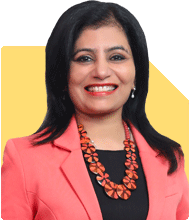Omkeshwar Singh | Answer |Ask -Follow
Head, Rank MF - Answered on Oct 27, 2021

Hope this mail finds you well!
I have SIPs in the following schemes
| Fund (Growth) | Amount | Frequency |
| 1. Quant Infrastructure Fund - Direct Plan | ₹2,000 | Weekly |
| 2. Mirae Asset Emerging Bluechip Fund - Direct Plan | ₹2,500 | Monthly |
| 3. SBI Banking & Financial Services Fund - Direct Plan | ₹1,000 | Weekly |
| 4. Tata India Consumer Fund - Direct Plan | ₹1,000 | Weekly |
| 5. Axis Bluechip Fund - Direct Plan | ₹1,000 | Weekly |
| 6. Parag Parikh Flexi Cap Fund - Direct Plan | ₹1,500 | Weekly |
| 7. Franklin India Feeder - Franklin U.S. Opportunities Fund - Direct Plan | ₹1,500 | Weekly |
My goal is to create wealth by doing SIPs for a long time.
Kindly let me know if these schemes are good for the long run or are there are better alternatives to move or rejig in my MF portfolio.
Also, I am thinking for my wife to invest SIPs of 5k monthly each in SBI small-cap or mid-cap fund and quant ELSS fund.
Kindly suggest to me whether these schemes are good or should I select something else.
You may like to see similar questions and answers below
Omkeshwar Singh | Answer |Ask -Follow
Head, Rank MF - Answered on Aug 04, 2020
Omkeshwar Singh | Answer |Ask -Follow
Head, Rank MF - Answered on Mar 18, 2021
Omkeshwar Singh | Answer |Ask -Follow
Head, Rank MF - Answered on Nov 29, 2019
Ulhas Joshi | Answer |Ask -Follow
Mutual Fund Expert - Answered on Sep 25, 2023
Ramalingam Kalirajan |9758 Answers |Ask -Follow
Mutual Funds, Financial Planning Expert - Answered on Dec 28, 2024
Sunil Lala |214 Answers |Ask -Follow
Financial Planner - Answered on Jul 17, 2025
Sunil Lala |214 Answers |Ask -Follow
Financial Planner - Answered on Jul 17, 2025
Archana Deshpande |117 Answers |Ask -Follow
Image Coach, Soft Skills Trainer - Answered on Jul 17, 2025
Dr Nagarajan J S K |1829 Answers |Ask -Follow
NEET, Medical, Pharmacy Careers - Answered on Jul 17, 2025
Dr Nagarajan J S K |1829 Answers |Ask -Follow
NEET, Medical, Pharmacy Careers - Answered on Jul 17, 2025
Dr Nagarajan J S K |1829 Answers |Ask -Follow
NEET, Medical, Pharmacy Careers - Answered on Jul 17, 2025
Dr Nagarajan J S K |1829 Answers |Ask -Follow
NEET, Medical, Pharmacy Careers - Answered on Jul 17, 2025
Dr Nagarajan J S K |1829 Answers |Ask -Follow
NEET, Medical, Pharmacy Careers - Answered on Jul 16, 2025
Dr Dipankar Dutta |1755 Answers |Ask -Follow
Tech Careers and Skill Development Expert - Answered on Jul 16, 2025
Nayagam P P |8925 Answers |Ask -Follow
Career Counsellor - Answered on Jul 16, 2025

























